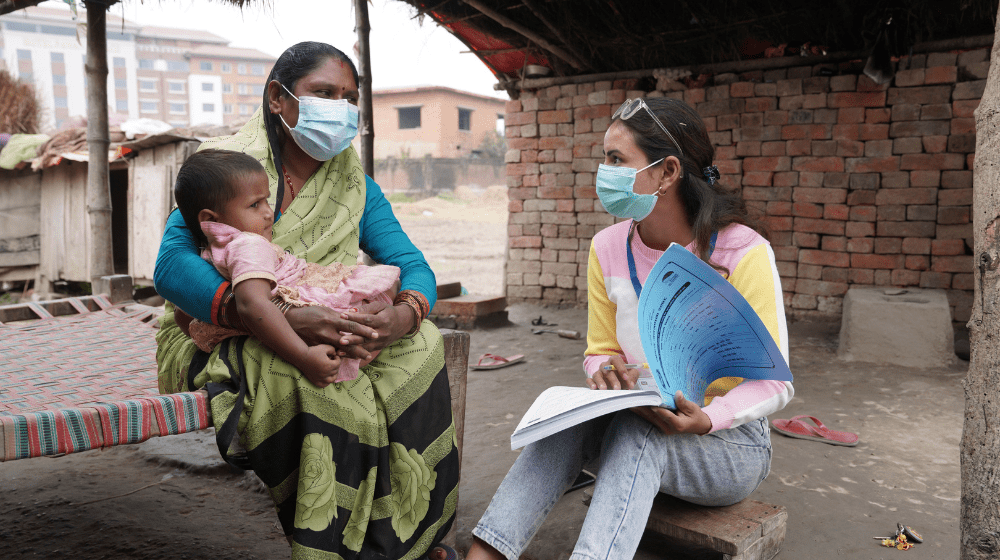Opinion-editorial by Pio Smith, UNFPA’s Regional Director for Asia and the Pacific, on the occasion of World Population Day.
Thirty years ago, maternal mortality rates were very rough estimates.
Today, data and technology allow us to more accurately measure women’s access to sexual and reproductive healthcare, including reductions in maternal mortality, uptake of contraception, and progress toward gender equality. We can now measure success better than ever before.
Many initiatives over the last thirty years have contributed to these advancements. The United Nations Secretary-General’s call for a “data revolution” to equip countries with data systems to track and achieve the Sustainable Development Goals has encouraged countries to invest in better data collection, analysis, and measurement tools. While the increasingly available data shines a spotlight on progress, it also exposes the gaps that remain, including in access to sexual and reproductive health and rights.
Consider Amina, a 28-year-old woman living in a remote village in Southeast Asia. Pregnant with her third child, she faced a long journey to the nearest clinic. In her village, there were no skilled birth attendants, and emergency obstetric care was a distant hope. Unfortunately, Amina’s story is not unique. I have met women with similar stories across countries in Asia and in the Pacific, and I have seen firsthand that these inequalities in access are widening not only between countries but also within countries.
Health systems are plagued by gender inequality and biases based on displacement and ethnic discrimination. Consequently, indigenous women like Amina are less likely to receive antenatal care, more likely to give birth as teenagers, and much more likely to die from pregnancy-related causes.
This raises the question: Are we collecting the data we need to truly accelerate progress? Who is still going uncounted and unaccounted for?
Data is not just numbers; it’s the story of people’s lives. It provides insights into the health and well-being of individuals. Quality data collection and analysis help us identify service gaps, understand access barriers, and develop targeted interventions for those often left behind, including women, girls, indigenous populations, people with disabilities, the LGBTQIA+ community, and older persons.
In a region that faces rapid population growth in some areas, rapid ageing in others, as well as widespread climate change, conflict, and crises, reliable population data is more important than ever. Inclusive and culturally relevant data, disaggregated by gender, ethnicity, and other factors, is essential to ensuring everyone – every individual – has access to universal sexual and reproductive health and rights.
Data on maternal deaths highlights areas where healthcare systems are failing women. It can reveal shortages in skilled birth attendants, lack of emergency obstetric care, or socio-cultural barriers that prevent women from seeking timely care.
Data on contraceptive use and unmet need for family planning increases understanding on where and why gaps exist, such as cultural stigma or lack of education about contraception that can lead to high rates of unintended pregnancies.
Data on violence against women indicates the prevalence of this horrific act and how and where it happens, and the harms that result. For example, UNFPA’s kNOwVAWdata initiative supports ethically sourced quality data to measure the prevalence of violence against women, while protecting confidentiality to ensure no further harm. Today, 32 out of 36 countries in the region have conducted at least one survey, providing quality data to inform how better we can serve those that need us most.
By breaking down data by age, geography, and socio-economic status, we can pinpoint barriers and address them through community engagements, awareness campaigns, improved supply chains, and policy changes to push forward those left behind.
Governments, civil society, and international organizations must collaborate to enhance data collection, analysis, and use. This includes leveraging new technologies, such as mobile health platforms and geospatial mapping, to reach and document underserved populations. It also means ensuring data drives decision-making at all levels, from local health clinics to national policy forums.
Data is the lifeblood of effective, equitable healthcare systems. It shows where we are succeeding and where we are falling short. It guides our actions and holds us accountable. Yet, people’s lives cannot be summed up by a single statistic or reduced to mere data points. Humanity is a diverse tapestry of hopes and dreams, and it is by ensuring every individual is accounted for that we can fulfill our vision: a resilient and equitable future where everyone counts.


